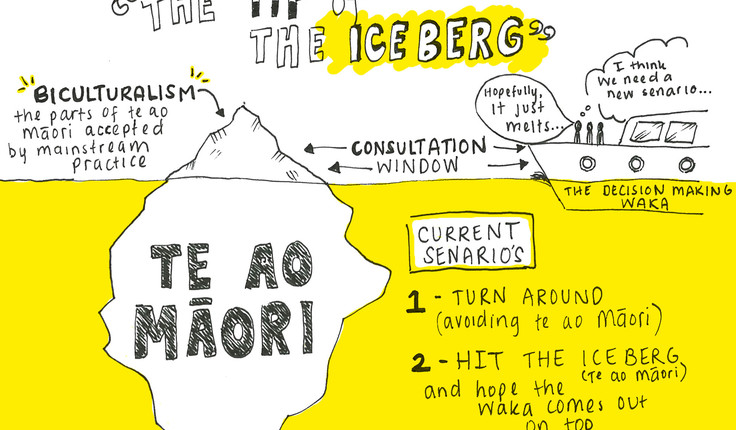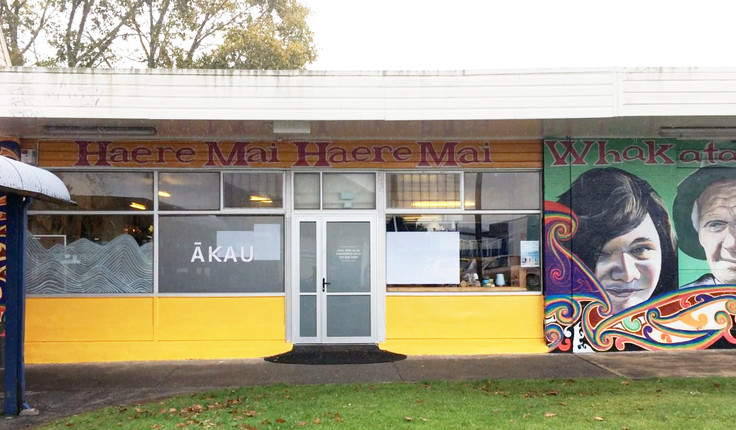News
“Hey Landscape Architect, ko wai hoki koe?”
Posted 21 02 2020
in News

Te Tau-a-Nuku Article
Lessons from my masters thesis research on decolonising mainstream placemaking practice in Aotearoa, New Zealand

Na Amelia Blundell (Nga Puhi me Ngāti Kahu)
In our colonial places we enjoy carved facades, a series of pou amongst signs that tell us of the Māori that used to live there. As the Landscape Architects who play a key role in creating those places, we often feel satisfied that we have effectively ‘provided for’ te ao Māori. But we shouldn’t feel satisfied at all. A quick brush up on Te Tiriti or catching a glimpse of iwi, hapū, and whānau in their never ending struggle for tino rangatiratanga, should be more than enough to make us question our role and the decisions we make. Regardless of our intentions (which I am sure are good), we most often fail to go beyond forms of aesthetic biculturalism and can’t seem to grasp our role in perpetuating a situation where Māori remain a junior partner in the determining of their own lives and places.
Fresh out of my undergraduate degree, I wanted to understand why this is the case. My path of study led me back to the place and people I had come from. A place where everybody is an expert in making place and where design and creativity is not limited to the professionals. I had to ask; what does tino rangatiratanga mean for me, my whānau, hapū and iwi, and where does landscape architecture fit into that? And be prepared for the answer that it might not fit at all. Decolonisation is not a metaphor and te ao Māori is not an ‘and’ to existing project briefs and processes but in fact an ‘elsewhere’. So where does that leave our mahi in landscape architecture?
These questions led me on a hikoi back home to listen and share kōrero with design kaimahi working around the far north. I was lucky enough to work with ĀKAU, a design and architecture firm based in Kaikohe, who design local projects with taitamariki and their community. I was extremely humbled by the many different place-makers and place-keepers I came across. From taitamariki realising their potential, to the kaikaranga holding the space and keeping everyone safe. The act of creating place is so much bigger than my undergraduate degree had led me to believe. We, Landscape Architects can create ideas, sure, but to create places we need kaitiaki, the story-tellers, whānau, kaumatua, kaiako, taitamariki and rangatahi who work based on reciprocity, not salary. Surrounded by so many “unlikely” place-makers I was quickly reminded that given half the chance, people could build for themselves.
I certainly did not get all the answers that I set out to find and in many ways I am finishing up this research with more questions than I started with. But one thing I am sure of, is that when it comes to making the places around us we have everything we need. Papatūānuku does not cry out for Landscape Architects, she cries for us, for life, not flashy design ideas. So, in saying that, I want to leave you all with the same question that I was left with by one of my whānaunga: are we, as the ‘experts’, ready to relinquish our control? Because when our designs become monologues instead of dialogues with others, we seed all sorts of injustices.
Mauri ora
Amelia Blundell is a member of Te Tau-a-Nuku and is currently completing her M.Arch Thesis at Victoria University. We hope to publish more from her thesis once the results are in.
Te Tau-a-Nuku is a collective of Māori Landscape Architects and is part of Nga Aho, the Māori Professional Designer’s Network.
Share
14 Apr
NZILA Board nominations close tonight

Read the insights from current Board members
What does the current Board have to say about this opportunity? REMINDER: Board Nominations close tonight, 14 April, 11.59pm We …
08 Apr
Update from Environmental Legislation Working Group
RMA Reforms and NZILA Wānanga
Our understanding of Spatial Planning and in creating well-functioning environments is more deeply considered than simply green fluff - the …
02 Apr
Follow up from the virtual IFLA World Council (22 and 23 March)

Did you attend the virtual IFLA World Council held last weekend? Presentations and ReportsThese can be found here. RecordingFor those …
Events calendar
Full 2025 calendar